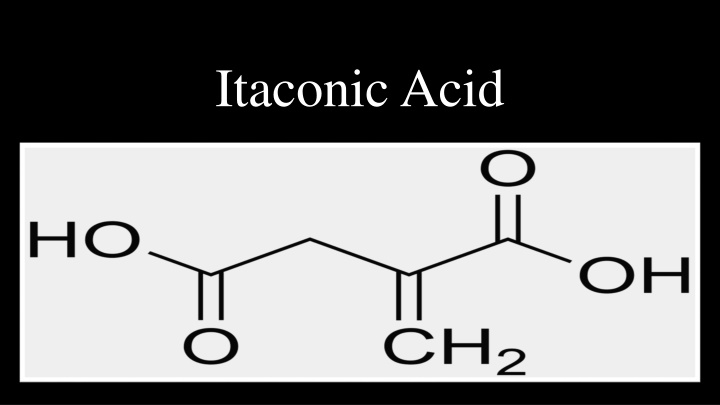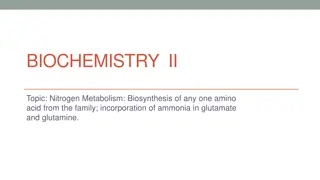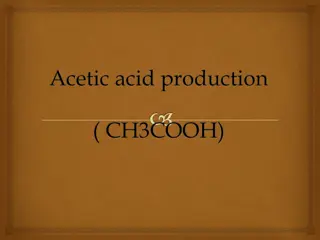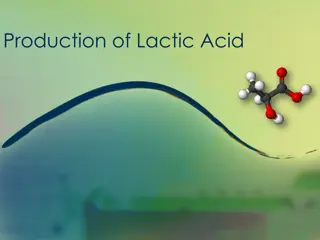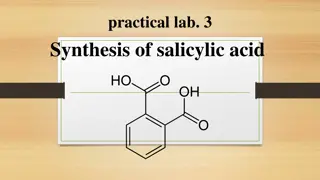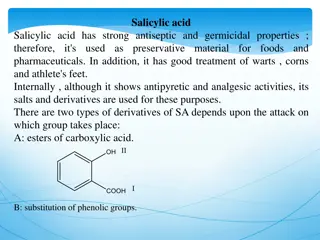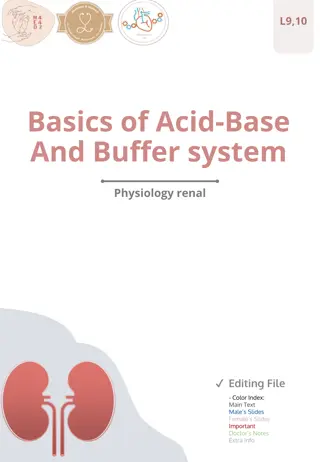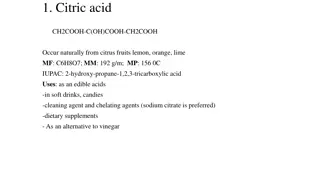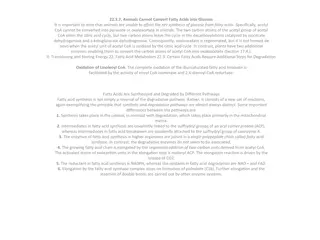Production and Biosynthesis of Itaconic Acid
Itaconic acid, an unsaturated organic diacid, is a valuable platform chemical with potential industrial applications. Produced by organisms like Aspergillus terreus, it can serve as a substitute for acrylic acid in polymerization processes. The biosynthetic pathway involves enzymatic conversion of cis-aconitate to itaconic acid. This pathway has been a subject of debate, with proposed routes linking itaconic acid production to the tricarboxylic acid (TCA) cycle or alternative pathways such as citramalate. Understanding the production and biosynthesis of itaconic acid is crucial for its utilization in various industrial sectors.
Download Presentation

Please find below an Image/Link to download the presentation.
The content on the website is provided AS IS for your information and personal use only. It may not be sold, licensed, or shared on other websites without obtaining consent from the author.If you encounter any issues during the download, it is possible that the publisher has removed the file from their server.
You are allowed to download the files provided on this website for personal or commercial use, subject to the condition that they are used lawfully. All files are the property of their respective owners.
The content on the website is provided AS IS for your information and personal use only. It may not be sold, licensed, or shared on other websites without obtaining consent from the author.
E N D
Presentation Transcript
Itaconic Acid Itaconic Acid Itaconic acid (or methylenesuccinic acid, CAS 97-65-4) is an unsaturated organic diacid. That unsaturation makes itaconic acid a possible substitute for acrylic acid as a platform chemical, because it can be polymerized in a similar way by addition. This valuable acid can be produced by several organisms, such as Candida sp., Pseudozyma antarctica, and several species of Aspergillus, but the two most common microorganisms used are Aspergillus terreus, used in industrial processes, and Ustilago maydis, which is currently being actively investigated as a possible industrial product.
Production of Itaconic Acid Itaconic acid is an example of a di-carbonic unsaturated acid. These acids are used as building blocks for large numbers of compounds, such as resins, paints, plastics, and synthetic fibers (acrylic plastic, super absorbants, and antiscaling agents). The CAC intermediate cis-aconitate is enzymatically processed by cis-aconitate dehycarboxylase (CadA) to produce itaconic acid. At the industrial scale the most explored organism for the fermentative production of itaconic acid is Aspergillus terrus. The biosynthetic pathway of itaconic acid is like citrate biosynthesis, where the flux of the CAC is used in the catalytic conversion of cis-aconitate into itaconic acid. Thus citrate is synthesized from oxaloacetate and acetyl CoA, while oxaloacetate is synthesized from pyruvate by anaplerosis, which starts from the pyruvate that is the end product of glycolysis. The accepted mechanism for itaconic acid production consists of the conversion of cis-aconitate to itaconate by an enzymatically catalyzed decarboxylation
Biosynthesis Pathway Biosynthesis Pathway The biosynthesis of itaconic acid was for a long time hotly debated, because it was not clear whether itaconic acid arises from a pathway including parts of the tricarboxylic acid (TCA) cycle or an alternative pathway via citramalate or the condensation of acetyl-CoA. Bentley and Thiessen (1957) proposed a pathway for the biosynthesis of itaconic acid. Starting from a sugar substrate like glucose the carbon molecules are processed via glycolysis to pyruvate. Then the pathway is split and part of the carbon is metabolized to Acetyl-CoA releasing a carbon dioxide molecule. The other part is converted to oxaloacetate so that the previously released carbon dioxide molecule is again incorporated. In the first steps of the citric acid cycle, citrate and cis-aconitate are formed. In the last step, the only itaconic acid pathway dedicated step, cis-aconitate decarboxylase (CadA) forms itaconic acid releasing carbon dioxide.
